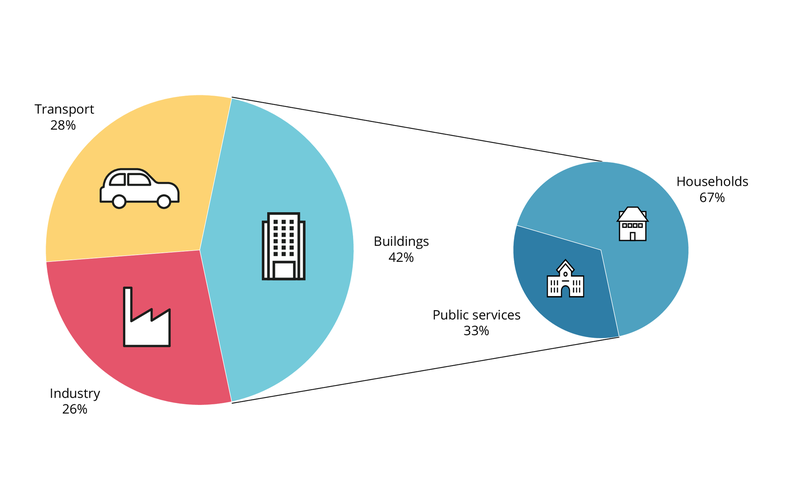All official European Union website addresses are in the europa.eu domain.
See all EU institutions and bodiesAir quality in Europe is improving. Yet polluted air still worsens health and causes preventable deaths, especially in cities. The good news is that cleaner solutions for transport, heating, industry and agriculture can help.
The air you breathe means a lot for your health and well-being. You may not have noticed but during your lifetime, it has probably become a lot cleaner.
If we continue reducing pollution in Europe, the next generation will get to breathe air that is even cleaner. The EU vision is to reduce air pollution to levels that no longer harm health by 2050. Indeed: improving air quality safeguards people’s health, and protects plants and wildlife. It also often mitigates climate change.
Europe’s air quality is improving but problems persist
Air pollution is the largest environmental health risk globally and in Europe. According to the EEA’s assessment on the health impacts of air pollution, poor air quality impairs people’s health and well-being and leads to about 300,000 preventable deaths every year in Europe alone.
Air quality in European cities varies considerably. However, almost all European city dwellers are exposed to fine particle pollution above the health guideline level set by the World Health Organization. Exposure to fine particles and other pollutants causes several adverse health effects, including respiratory and cardiovascular diseases, and cancer. Moreover, EEA studies have shown that the most vulnerable population groups are disproportionately affected.
Still, the situation is getting better. For example, the number of people dying due to fine particle pollution in the EU has nearly halved in the past 10-15 years. This means that Europe is on track to achieve its zero pollution action plan target of reducing these early deaths by 55% by 2030, compared to 2005.
Figure 1. Premature deaths in the EU-27 due to PM₂.₅ levels above the 2021 WHO guidelines and distance to the zero pollution target, 2005-2020

Explore different chart formats and data here
The long-term vision of achieving air quality that does not harm people’s health is still far away. But ambitious policies, local decisions and well-known solutions can accelerate progress significantly.
Cleaner transport, energy and agriculture for cleaner air
The EEA assessment on where air pollution comes from shows that in Europe, most of it is from heating buildings, road transport, industrial activities and agriculture. There are many good solutions to reduce pollution in each of these sectors.
For buildings, energy renovations and other energy-saving measures would reduce heating needs in the first place. At the same time, moving to modern heating solutions, like heat pumps, solar thermal collectors and renewables-based district heating systems, could reduce pollution. These measures are captured in the EEA’s briefing on decarbonising heating. It also points out that about half of the EU’s final energy consumption goes to heating, which makes it a key area to improve for energy security and reducing greenhouse gas emissions.
Figure 2. Final energy consumption by end-use sector, EU27, 2020

Explore different chart formats and data here
In transport, many benefits can come from improving infrastructure for walking, cycling and other types of active mobility, especially in cities. Promoting clean public transportation, car-sharing, reducing traffic and switching to electric vehicles would further cut air pollution, noise and greenhouse gas emissions.
Adopting new technologies to reduce pollution and switching to renewable energy would further reduce Europe’s industrial emissions, which have seen a steady decline over the past 10 years. In agriculture, too, EEA studies have shown that there are several opportunities to decarbonise food production and reduce ammonia and methane emissions. Often, these measures would also improve local air quality.
EU efforts towards clean air for all
EU law sets limits and targets for air quality in Europe. As part of this, EU Member States must monitor air quality and make the information publicly available through the EEA. Together with the European Commission, the EEA has set up the European Air Quality Index that shows the latest measurements from air quality monitoring stations around Europe. The service is also available as an app for Android and for iOS devices. Moreover, the EEA’s European air quality city viewer allows people to check average pollution levels in almost 400 cities across Europe.
The European Green Deal aims to improve air quality in Europe and align EU air quality standards more closely to the latest guidelines from the World Health Organization. The EU zero pollution action plan aims to reduce pollution to levels no longer considered harmful to people’s health and natural ecosystems by 2050.
In October 2022, the European Commission proposed revising EU air quality laws with stricter thresholds for pollution, more rights for citizens, better air quality monitoring and better public information.
In a nutshell: air quality and health
- Air quality is improving in Europe. However, air pollution is still a major health risk causing illness and preventable deaths.
- The EU wants to reduce air pollution to a level that does not harm human health by 2050.
- Cleaner and renewable solutions for heating, transport, industry and agriculture have a lot of potential to reduce air pollution.
What can I do?
- Check your local air quality from the European Air Quality Index. Depending on your situation, consider avoiding outdoor activities if air quality is poor that day.
- Think of ways to save energy at home and favour sustainable transport modes, such as walking, cycling or public transport. Active mobility is also good for your health.
- Pay attention to indoor air quality. Think about the materials in your home and ensure adequate ventilation.
- Get involved. Ask your local politicians about air quality in your city and what is being done to improve it.
This feature article is part of EEA Signals 2023 — Environment and health in Europe.
See other articles in EEA Signals 2023
Editorial — Caring for the environment is caring for ourselves
Interview — What is the European environment and health atlas?









